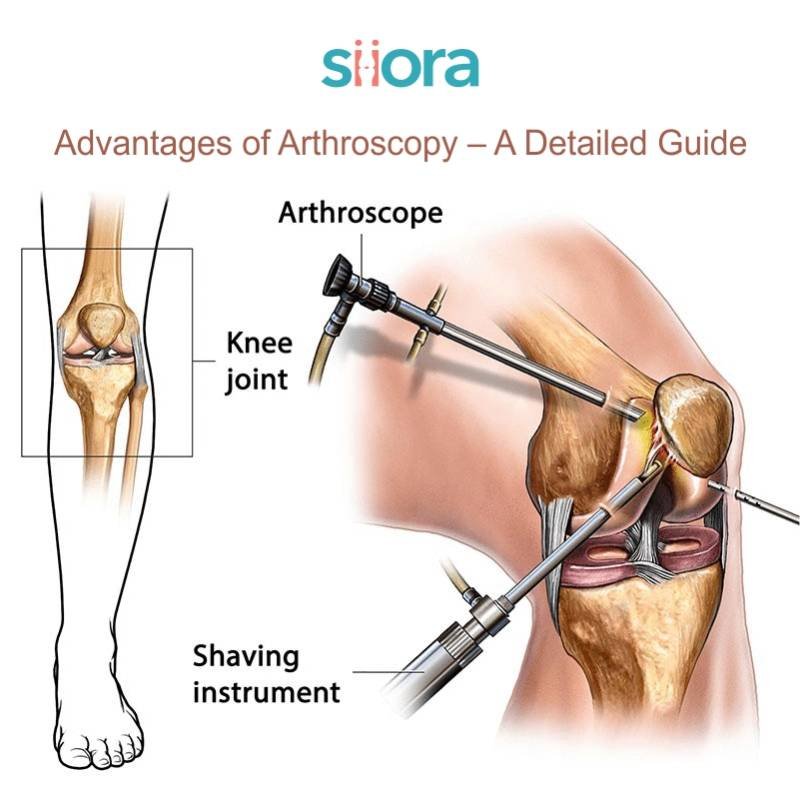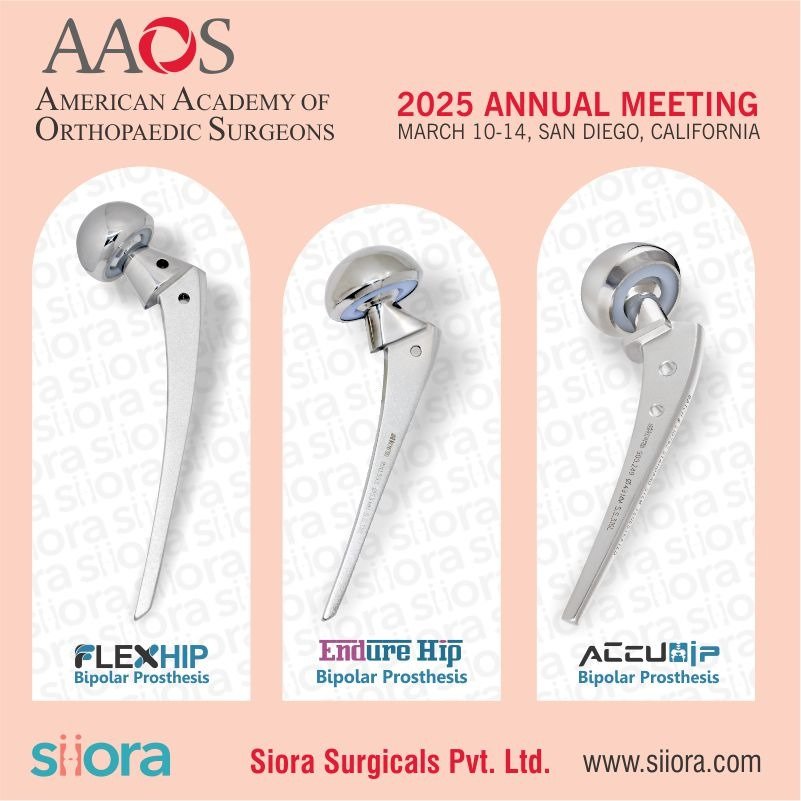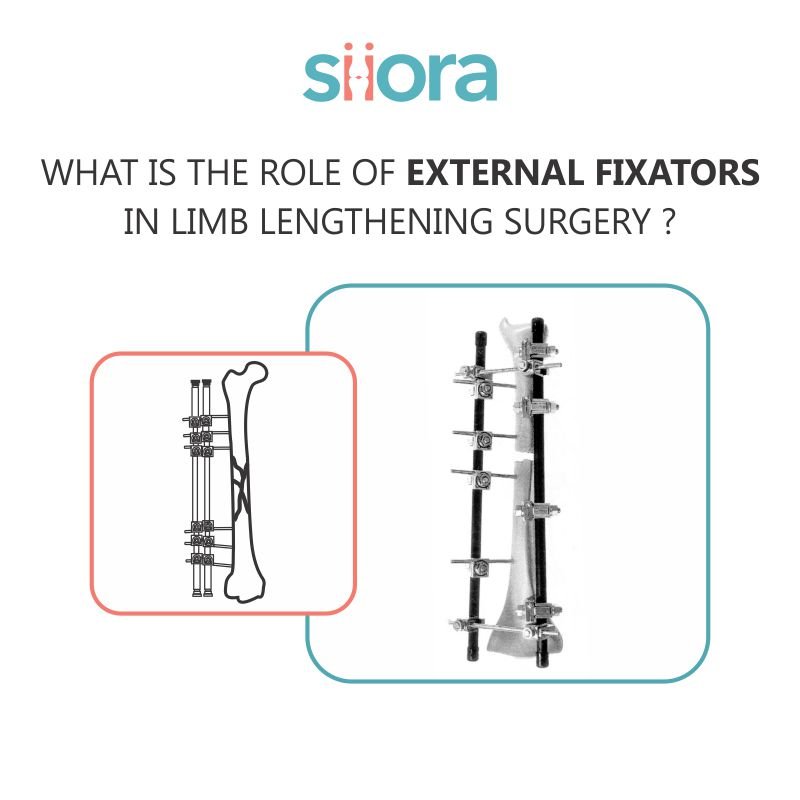Open reduction and internal fixation (ORIF) has been the traditional procedure to fix various musculoskeletal injuries for years. This traditional approach has no wonder been effective in managing even severe complications. However, it requires larger incisions, involves extensive tissue disruption, and has lengthy recovery times. Well, all this depends on the type of the injury and its severity. Although the orthopedic industry never fails to surprise us and it did again with the introduction to arthroscopy. The development of arthroscopy revolutionized the orthopedic industry, offering a minimally invasive alternative. This blog will have a detailed look at why arthroscopy is so popular and what advantages made this technique the choice of orthopaedic surgeons wherever feasible.
What is Arthroscopy?
Arthroscopy means “joint viewing,” and utilizes a pencil-thin instrument called an arthroscope. This arthroscope is equipped with a miniature camera and a light source, allowing surgeons to visualize the inside of a joint through tiny incisions. The technique requires a few buttonhole-sized incisions to diagnose or treat a condition. It is just like viewing into a locked room through a keyhole but, with much better clarity and visuals. However, the fact cannot be denied that the technique is not feasible for all Orthopedic injuries or conditions. This doesn’t even make arthroscopy less effective of unpopular.
Well, this innovative technique boasts several advantages over traditional open surgery, making it a preferred option for many patients. Let’s delve deeper and explore why arthroscopy has become a game-changer in orthopedic care.
What Are the Advantages of Arthroscopy?
The core advantage of arthroscopy lies in its minimally invasive nature. That’s why it is also known as a minimally invasive surgery. Unlike open surgery, which requires large incisions to expose the entire joint, arthroscopy utilizes only a few small punctures. This is highly beneficial in many ways:
Reduced Tissue Disruption
Smaller incisions mean less damage to muscles, tendons, and ligaments surrounding the joint. This minimizes post-operative pain and swelling while leading to a smoother, quicker, and better recovery.
Less Blood Loss
Smaller incisions naturally lead to less blood loss during surgery. This is particularly important for patients with certain medical conditions or those taking blood thinners. It makes arthroscopy the choice for many patients.
Faster Healing
With less tissue disruption and blood loss, the body can focus on healing the surgical site. This leads to a quicker recovery time, allowing patients to return to their daily activities sooner when compared to traditional approaches.
Reduced Scarring
Smaller incisions heal into much fainter scars compared to the large ones. So, there will be no noticeable scars like the ones associated with open surgery. This is a significant benefit for many patients, particularly those concerned about the cosmetic impact of surgery.
Outpatient Advantage
The minimally invasive nature of arthroscopy often allows for outpatient surgery. This means patients can undergo the procedure in a surgical center and return home the same day, eliminating the need for a hospital stay. This is helpful for the patient in several ways:
Reduced Cost: Outpatient surgery typically incurs lower costs compared to inpatient surgery, which involves hospital stay, meals, and additional monitoring.
Increased Comfort: The familiar environment of home often provides a more comfortable setting for recovery compared to a hospital room.
Faster Return to Work: By avoiding a hospital stay, patients can potentially return to work and daily routines much quicker.
Diagnosis by Arthroscopy
Arthroscopy isn’t just about performing surgery; it’s a powerful diagnostic tool as well. The magnified view provided by the arthroscope allows surgeons to precisely identify the source of joint pain and damage. This technique can identify:
- Torn ligaments
- Damaged cartilage
- Inflamed synovial tissue
- Patellar damage
- Arthritis
Treatment by Arthroscopy
Once the problem is identified, the surgeon can use specialized instruments and implants like Knee and Shoulder arthroscopy implants that are inserted through the same small incisions to perform various procedures, such as:
- Repairing torn ligaments
- Trimming or removing damaged cartilage
- Removing loose bodies
- Debriding (removing inflamed tissue)
What Are the Benefits of Arthroscopy in Terms of Rehabilitation?
The combination of precise diagnosis, minimally invasive treatment, and faster recovery translates to improved patient outcomes. Arthroscopy offers several advantages in terms of rehabilitation and return to function:
Preservation of Muscle Strength
Minimally invasive techniques minimize muscle damage, allowing patients to retain more muscle strength after surgery. This leads to a faster and more complete recovery of joint function.
Early Physical Therapy
With less pain and quicker healing, patients can often begin physical therapy sooner. This helps regain strength, flexibility, and range of motion in the affected joint.
Improved Long-Term Function
By minimizing joint damage and promoting faster recovery, arthroscopy can potentially lead to improved long-term joint health and function.
Who Can Get Benefited from Arthroscopy?
Arthroscopy is a versatile procedure that can diagnose and treat a wide range of joint problems. Here are the common applications of arthroscopy based on the type of joints:
Knee: Meniscal tears, ACL reconstruction, cartilage injuries
Shoulder: Rotator cuff tears, labral tears, bursitis
Hip: Impingement syndrome, labral tears
Ankle: Cartilage injuries, ligament sprains
Wrist: Carpal tunnel syndrome, ligament tears
What Are the Important Considerations with Arthroscopy?
While arthroscopy offers numerous benefits, it’s important to remember that it’s not always the right choice for everyone. Here are some factors to consider:
Severity of the Condition
In some cases, the extent of joint damage may necessitate a more traditional open surgical approach. In such cases, arthroscopy may not be an effective treatment option.
Overall Patient Health
Sometimes, health ailments other than the musculoskeletal problem may also hinder arthroscopy. The surgeon will decide after performing certain examinations whether arthroscopy is safe for the patient or not.
Osteoarthritis
Research from the Arthritis Foundation has suggested that arthroscopy may not be as effective as traditional procedures in people with knee osteoarthritis (OA) and some other degenerative conditions. However, it still depends on the patient and the doctor based on an individual’s condition and what the patient wants. (Source: https://shorturl.at/amyS1)
About Siora Surgicals
Siora Surgicals Pvt. Ltd. is an experienced yet growing manufacturer of a CE-certified range of Orthopedic implants in India. The company boasts an in-house manufacturing facility which is equipped with the latest and advanced machines. Siora has established its presence worldwide by serving hundreds of clients in over 50 countries. It is also a trustworthy manufacturer of knee arthroscopy implants and shoulder arthroscopy implants along with hundreds of other ones. The company also provides high-quality contract manufacturing services worldwide.








